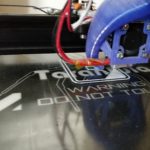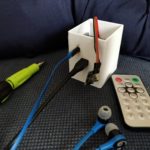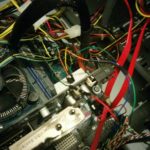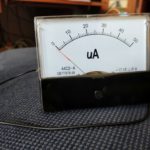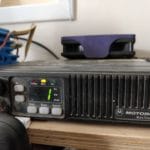Controlling PSU fan After my PSU died and released its magic smoke, I got the…
ESP32 Internet Radio
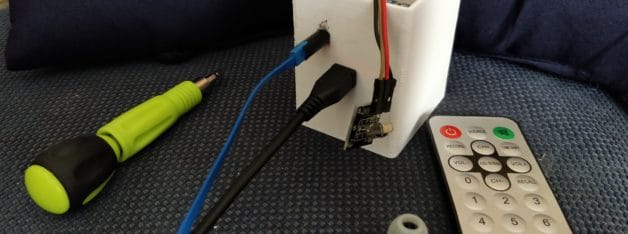
ESP32 Radio
Why using internet radio?
Not long ago we replaced the light in the kitchen to new LED lamp.
On the next morning we discovered that the LED driver is creating a lot of noise and blocking the commercial radio stations.
I started looking for solutions and many people suggested using a filter to block the noise, the popular filter turned to be some kind of metal piece salvaged from power supply.
The only problem is that I didn’t want to install anything that isn’t approved by the local standards institution due to safety and insurance issues.
After digging more on the internet, I found this video by Andreas Spiess where he tested many options including ESP8266.
In the end he went with the ESP32 Radio project by Edzelf.
Ed did a great work building this enormous project.
What’s in my build?
If you go with this project, you can choose how you want to build it.
It’s very modular and you can decide if you want LCD screen, SD Card reader for playing MP3, Rotary encoder etc.
The initial thought was to use LCD but later I ditched the idea and chose to use only IR receiver.
Since the stations will be fixed on the remote control, I don’t really need to know what’s playing right now.
Building and testing
After connecting all the jumper wires as shown on the table in the documentation I tried to configure it.
I’m not sure why but I messed something and it didn’t work, later I understood that the config file needs to be flashed separately from the code so take a few minutes to read the instructions properly.
The system worked without any problem so I went to design small box for it.
My target was to make a box with small footprint.
The boards were scanned on the scanner to get reference pictures in order to draw it on Fusion 360.
It turned out to be good idea but with boards that has components on both sides it makes the scan blurry (it needs to be flat on the glass to get good image).
Fitting everything inside the box was pretty easy (I missed the holes of the ESP32 but it was secured by the force of the audio board above).
The second testing was done when everything was inside but I encountered issues, the audio was choppy and something wasn’t right.
In the end I found that the jumper wires were the culprit, probably too long (I think Andreas mentioned it in his video) so I soldered short wires directly to the boards.
Everything worked as intended.
Except one thing.
When connecting the ESP32 Radio to speakers the audio was not clean and a humming was present, very annoying.
Took it out of the box and no humming.
I was confused for a few days but in the end I realized that the hole for the 3.5mm plug wasn’t big enough so the ground lug didn’t touch the contact on the socket.
After drilling a bigger hole everything was working again.
In the end, I think it’s very fun project to build and not expensive.
Guess what happened when I finished building it?
On the very same day that I finished building this project (took almost a year due to time constraints) the LED driver died and the lamp was replaced with new and silent driver.
What a weird coincidence…
73!
Ido.


